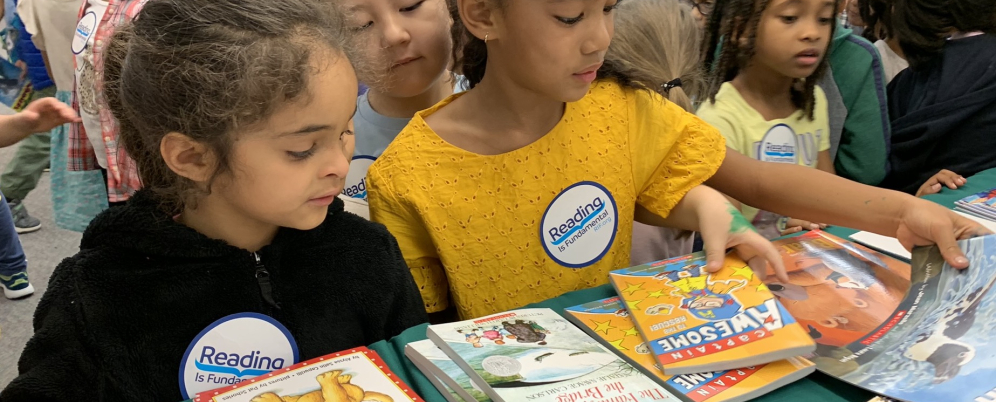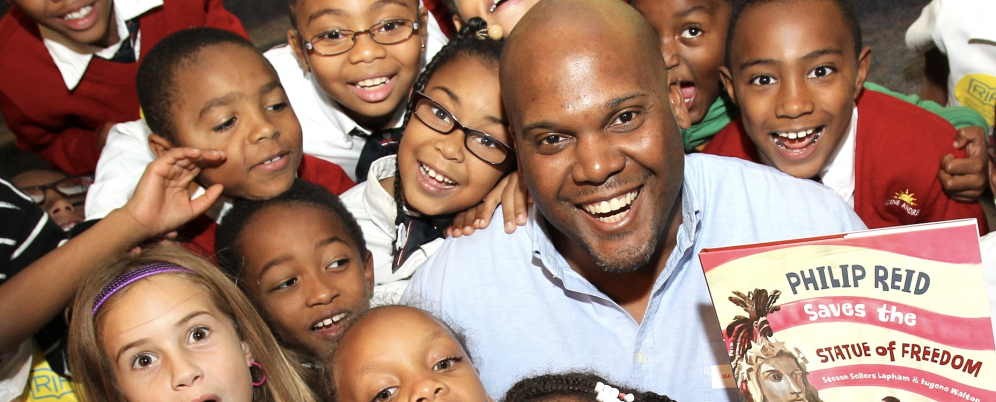Four ways to spark joy in reading
When looking at the recent headlines on reading instruction there is one word you won’t see mentioned often—JOY. Yet, building a lifelong love for reading not only involves strong and capable readers who can decode and comprehend but readers who love to read and do so often. Whether you are a librarian, classroom teacher or literacy professional, we all play a role in igniting joy for our students. Here are four tips to spark the joy of reading for your students!
1. Create TIME for independent reading
Students’ motivation and interest in reading is higher when there is dedicated school time to read (Krashen, 1993). There is a strong correlation between reading volume and reading achievement (Mol & Bus, 2011). Unfortunately, most core reading programs used in the U.S. include an average of only 15 minutes of actual reading time for students per day (Brenner & Hiebert, 2010).
Often children performing at the bottom quartile on NAEP reading rely exclusively on schools to provide reading materials and time for reading. It is imperative that educators create time for student independent reading within their school day. Educators can also help by stressing the importance of reading independently to families and afterschool caregivers. Check out these tips for families to build a culture of reading at home.
2. Allow CHOICE in texts
Simply put, when students are given choice in their reading materials, they are more likely to read. Self-selected books have a greater influence on reading volume and motivation (Fisher & Frey, 2018). Moreover, when students are given opportunities to select their own books, they are more intrinsically motivated (McRae & Guthrie, 2009) and more likely to develop a life-long love of reading. Educators should find ways to enable choice within their school day
3. Provide access to a DIVERSE selection of texts
Along with choice, children are motivated and find joy in reading when they see their identities and lived experiences represented in the books they read as well as opportunities to experience new perspectives (Bishop, 1990; Johnson et al., 2018). This includes diverse genres such as graphic novels, novels written in verse, and informational texts so students have exposure to different language structures. Being format inclusive of print and digital texts also ensures that students have access to reading wherever and whenever possible. RIF offers monthly thematic book lists for diverse options that will spark joy in reading for any student.
4. Build ENGAGEMENT through creative and collaborative opportunities
Reading is more engaging when it becomes a social activity. Starting a Book Club is a great way to both deepen students’ comprehension and provide authentic opportunities to talk about texts. Check out RIF’s Book Club guide here.
#BookToks are another engagement strategy that connects students’ love of reading with social media by creating TikTok videos featuring their thoughts on favorite books to encourage others to read the books too. Here are some #BookTok ideas and guidelines a teacher can share with their students.
All children deserve the opportunity to have time dedicated to reading, have choice and access to high-quality reading materials, and engagement opportunities that help them develop a love of reading!
Find this article published in Equity & Access: American Consortium for Equity in Education, issue 22. Read it here.
Erin Bailey
Director, Programs & Content

Erin Bailey joined RIF in summer 2021 as the Director of Programs and Content. Her role includes serving as the subject matter expert and developing, curating, and managing content for educators and families. Before formally joining RIF, Erin partnered with the organization in several different ways such as hosting RIF sponsored webinars and supporting a grant project. In addition to RIF, Erin Bailey has been an educator in U.S. and international classrooms for over a decade. Her teaching experience includes classroom teacher for PreK-8, Literacy Specialist, English Language Development Specialist, and university instructor. Erin is a qualitative researcher who utilizes wearable video camera and walking methodologies. Her studies include interdisciplinary literacies in outdoor learning spaces, arts-based education in museum spaces, literacy teacher education, and social movements. She has presented her research at several major conferences including AERA and OMEP World and has been published in Qualitative Inquiry.

